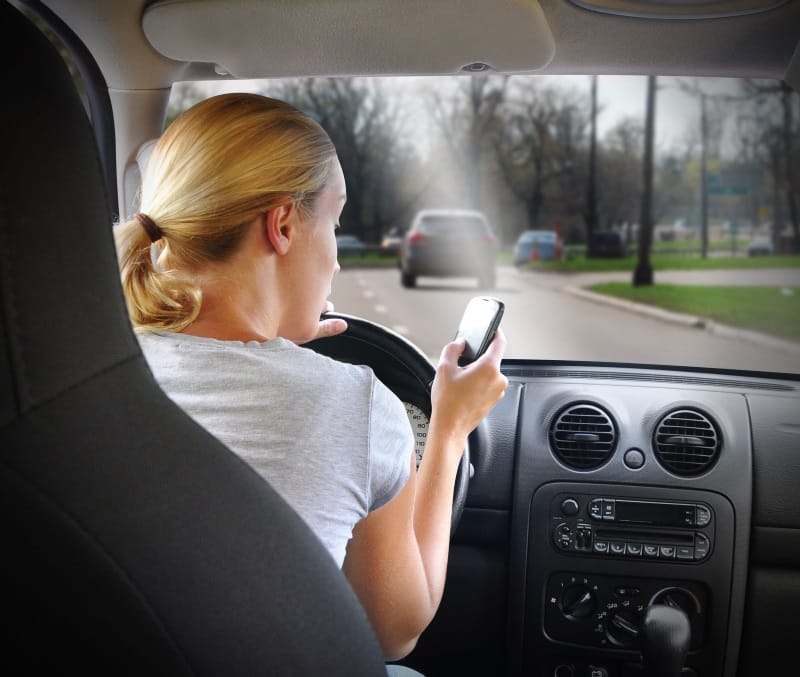Texting and driving is becoming more and more common these days. Who hasn’t had the urge to remove their attention from the road and take their hands from the wheel to answer that beep-beep from a cell phone? Yet doing so can be a potentially dangerous and illegal maneuver.

If all motorists were to consider the multitudes of tragic incidents where the combination of texting and driving has led to the egregious combination of serious injury and considerable legal problems, they might find it best to let the phone wait and answer at a more opportune moment.
While teenage drivers are the most at fault for this serious lack of attention to public safety, the lesson to be learned applies to just about anyone who is carrying a mobile device because the urge to disregard safety and take a call or text someone while driving is ever present.
If you feel that this has been true for you, the following statistics might help you reconsider public and personal safety and ignore the device, effectively ensuring you arrive at your destination unharmed and on the right side of the law.
The Risks involved with Texting and Driving
The numbers don’t lie, distracted drivers are capable of causing the same kind of damage as drivers who operate vehicles under the influence of alcohol.
-According to the National Traffic Highway Safety administration, 18 percent of all traffic fatalities in recent years was due to driver distraction. That was a full 3,328 people killed in 2012, and another 421,000 people injured by not paying close attention to the road.
With the flick of a finger, a driver can make themselves 23% more likely to be involved in a car accident, according to a study done by the Virginia Tech Transport Institute. The study was performed on the commercial driving industry and proved that of all distractions texting is the most dangerous, making it 23% more probable that an accident will occur.
-According to the same study performed by VTTI, a driver moving at 50 mph who also takes their eyes off the road for the average time it takes to text, will have driven a full length of a football field without looking at the road.
Legal Implications of Texting And Driving
The laws presiding over best driving practices are quite clear, especially here in the State of Colorado:
The Colorado Texting Bill clearly states that all drivers are expressly prohibited from operating a “wireless telephone” while operating a vehicle. A wireless telephone can be considered any telephone that operate without a direct physical cable connection to the service provider’s equipment, and that includes all mobile phones and devices.
While the law does make some allowances for the use of a wireless telephones by a person operating a vehicle, these are only in “emergency” situations. Again it is important to note that “emergency” as defined by traffic law is a pretty narrow definition.
An emergency, in which a driver could use a wireless telephone, would be if they were alerting the authorities to a life-threatening or criminal act being perpetrated against another human being. This might include the occurrence of roadside accidents, road hazards or other such emergencies.
The Enforcement of the Texting Bill
The Colorado Texting Bill also has specific repercussions for direct offences. It is important to know that cellphone and texting laws in Colorado are considered “primary law” — because of their potentially lethal consequences — this means that an officer can pull you over without having witnessed any other infraction.
First offences will be met with a $50.00 fine and an additional $6.00 surcharge; second offences will be charged $100.00 and the surcharge.
Distracted driving is a serious risk no matter how old or experienced the driver may be. The laws that are in place are there for good reason and must be observed by all drivers on the road if younger motorists are to understand how essential traffic safety is to public and personal safety.
If you’ve found yourself on the wrong side of the law teaxting and driving, there may be a chance I can help you. Please give me a call at (719) 387-4111 or click HERE to contact me for a fast, free consultation.

 Out of a field of approximately 1,100 attorneys surveyed,
Out of a field of approximately 1,100 attorneys surveyed,